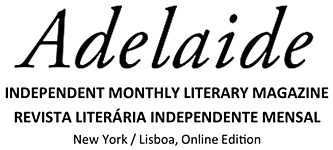MARIANNE SONG Shortlist Winner Nominee of the Adelaide Books Children’s Award
1. Tell us a bit about yourself – something that we will not find in the official illustrator’s bio. Do you have any unusual habits?
One of my key creative habits is reading newspapers and magazines every morning in pursuit of artistic freedom. I find The New York Times especially inspiring, and I enjoy reinterpreting its photos and cartoons based on my own memories. I allow the vague montages of the narrated aesthetic images to continuously roll through my mind while I match each clipped picture with my fragmented memory. Then, I begin storying my response to the inspirational image associations with colors. Every drawing is bordered with the nostalgia of my search for the innocence and purity of childhood. The colors are an essential part of the process to fill the inner emptiness arising from the unbridgeable chasm between my desire and reality.

My talent does not lie in depicting realism. For example, in elementary school I had to devise a way to draw roses by showing several layers of petals. Later, I applied geometric shapes, specifically triangles, to my Rose Garden piece. Since then, I have focused on creating abstract paintings that reflect my stormy emotions.
2. Do you remember what was your first work about and when did you create it?
From 2008 to 2010, I was a commercial real estate agent dealing with Korean clients in Shanghai. My own vanity endlessly conflicted with my authentic self. The reckless pursuit of wealth and happiness turned out to be a blindfold. The self-conceit lay in my social position, which was attached to working for a Fortune 500 company and various Korean conglomerates. The exploration of my deep sense of alienation from my career sparked an artistic fire so intense that I purchased a canvas and oil paint to escape reality.

I found myself absorbed in painting a girl sleeping in rose bushes and basking in the evening sunset. The girl seemed so happy and innocent, free of any expectations and responsibilities, as the blue sky turned violet-red and the rose blooms burst open with wild abandon. I realized that my avarice had imprisoned my true self in an unsatisfying and meaningless job. My rebellious artistic spirit clashed with the persona steeped in servitude that I was forced to adopt when working with clients. I was wandering and lost, confused about my life purpose, unsatisfied with the rewards I reaped, and humiliated at having to prostrate myself before my clients and bosses. While painting my geometric-patterned roses on canvas, I prayed to God to guide me to my place in the world, where my talents fit perfectly.
3. What are you working on right now?
Currently, I am writing a historical and biographic non-fiction with a focus on feminism, titled The Portrait of a Witch. The protagonist is Na Hye-seok, a South Korean artist who pursued self-love in her painting and writing. Her bohemian, care-free intellectuality and narcissism not only liberated her from a patriarchal and Confucianism-oriented society but distorted her reputation like that of a witch. After being forcibly divorced because of a love affair, she lost all of her social positions and was treated as a pariah. Her intense and stormy life was reminiscent of a witch hunt, during which women would be persecuted for their belief. Likewise, her soulful message for women’s self-actualization must have been cast in tears and pain. I’d like to reintegrate her desires as her own and our identity hidden behind our cerebral oppression with writing and painting. I believe that her intense and wild life would match the ideals Post-Impressionists pursued. The spontaneity, wildness, and primary colors in her works are representative of her identity as an artist and feminist. I hope that my abstract painting, which reflects more of the Fauvism style, will bring her unfettered emotions to full blossom.

4. What do you deem the most relevant about your work?
What is the most important to be remembered? Self-love is the theme that rings true in my works. Humans are born with self-love or an authentic self whereby life is directed as wished. However, as acceptance by others is a prerequisite for survival in society, a mask is often lacquered upon the innocent and pure faces of ours. In other words, being honest with our feelings is the first step toward self-love. To an artist, the work itself is him or her, since creating art can be deemed a form of self-confession. The resoluteness, fearlessness, and authenticity in an artist ironically lay vulnerabilities out in the open without being conscious of others’ reactions, and that pathos could reach deep enough to awake the souls of readers or audiences. I am still struggling to bridge the gap between my superficiality and true self while engaging in creative activities like writing and painting.

5. Artists that have influenced your work.
Feminism is the primary pillar that sustains my artwork. The female artists before me are my source of artistic inspiration. Their emotional resilience felt through their works lifted me up spiritually when I was lost in depression and my identities felt disintegrated. One of these female artists was Chun Kyung-ja, a Korean painter. The main theme of her works is a woman with a wreath of flowers, painted with bright colors as if she is living in paradise free of worry and depression. However, her truth is well expressed in her eyes, which are wide open as if she is helpless. The melancholic mood enunciates her disappointment toward society in which women toil endlessly. Her artistic struggle must have caused a social friction. The paradoxical effect of depicting sadness with vibrant colors makes the artist’s work so humane and reachable.



















